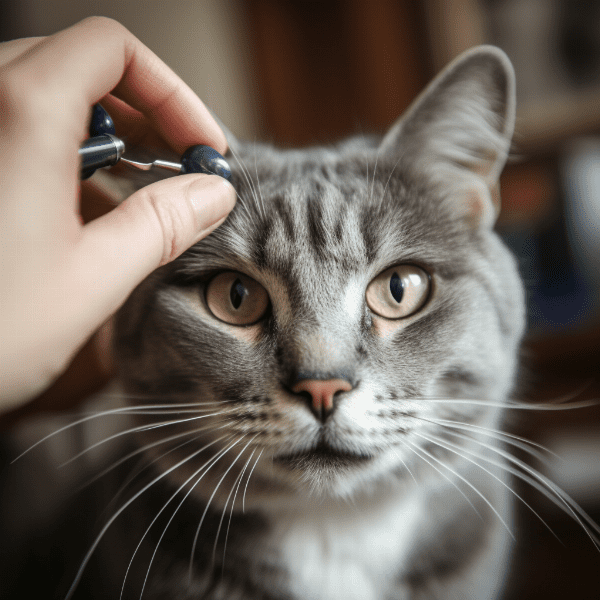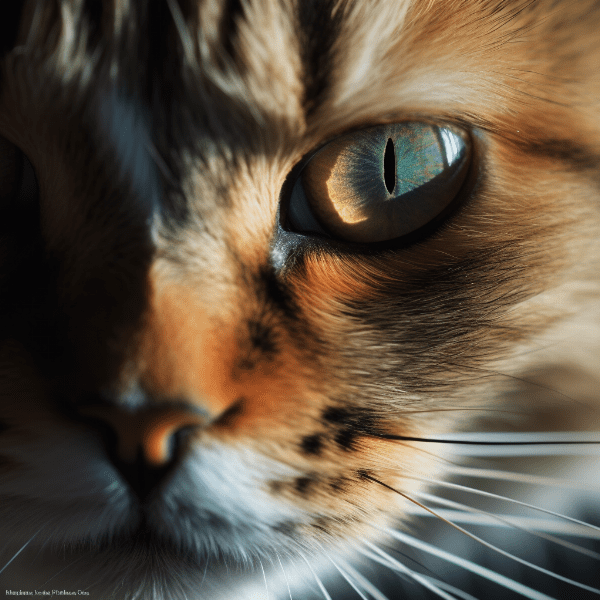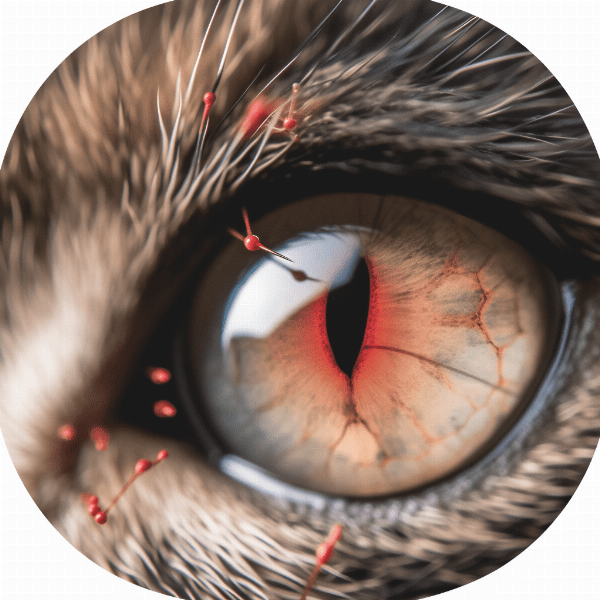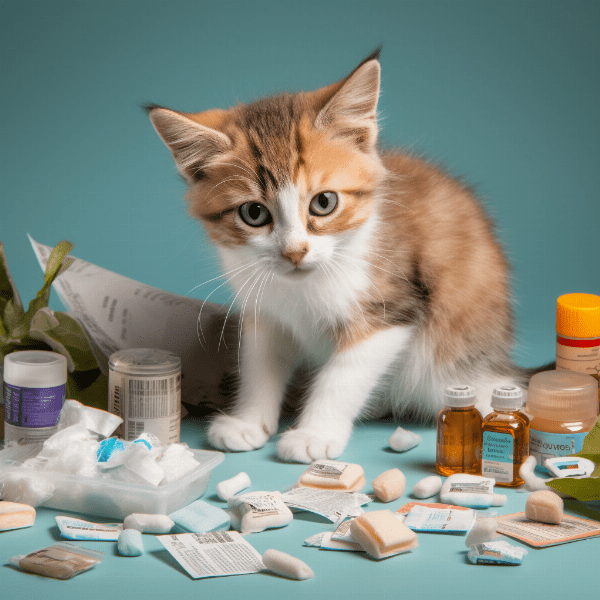Table of Contents
- Understanding Corneal Ulcers in Cats
- Signs and Symptoms of Corneal Ulcers in Cats
- Common Causes of Corneal Ulcers in Cats
- Diagnosis of Corneal Ulcers in Cats
- Treatment Options for Corneal Ulcers in Cats
- Medications for Corneal Ulcers in Cats
- Home Care and Follow-up for Cats with Corneal Ulcers
- Complications and Prognosis for Cats with Corneal Ulcers
- Preventing Corneal Ulcers in Cats
- Conclusion: Caring for a Cat with a Corneal Ulcer
Understanding Corneal Ulcers in Cats
A corneal ulcer in a cat is a painful condition that can cause discomfort and potentially lead to vision loss if not treated promptly. The cornea is the clear, outer layer of the eye, and when it becomes damaged, it can lead to an ulcer.
What is a Corneal Ulcer in Cats?
A corneal ulcer is a break or defect in the cornea of a cat’s eye. These ulcers can occur due to various causes, such as trauma, infection, or underlying health conditions. The severity of a corneal ulcer can vary from a superficial scratch to a deep wound.
How Do Cats Get Corneal Ulcers?
Corneal ulcers in cats can develop due to several reasons. One of the most common causes is trauma to the eye, such as getting scratched by another animal or being hit by a car. Additionally, eye infections caused by bacteria, viruses, or fungi can lead to the development of corneal ulcers. Certain underlying health conditions, such as dry eye syndrome or entropion, can also increase a cat’s risk of developing corneal ulcers.
What are the Symptoms of Corneal Ulcers in Cats?
Cats with corneal ulcers can experience a range of symptoms, including redness, tearing, squinting, or pawing at the affected eye. Other signs may include discharge from the eye, cloudiness or opacity in the cornea, and sensitivity to light. If left untreated, corneal ulcers can worsen, leading to decreased vision or even blindness.
How Are Corneal Ulcers Diagnosed in Cats?
To diagnose a corneal ulcer in a cat, a veterinarian will perform a thorough eye exam. This may involve using specialized tools to examine the eye and measure tear production. In some cases, a sample of the eye discharge may be taken and tested to determine the underlying cause of the ulcer. Accurate diagnosis is essential to determine the most effective treatment plan for the cat.
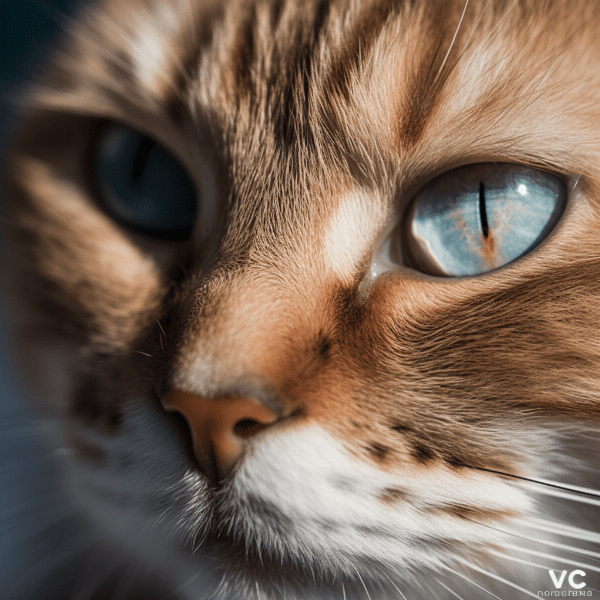
Signs and Symptoms of Corneal Ulcers in Cats
Cats with corneal ulcers can display various signs and symptoms that may indicate an underlying issue with their eyes. As a cat owner, it’s essential to be aware of these symptoms to recognize and seek prompt veterinary attention.
Redness and Discomfort
One of the most common symptoms of a corneal ulcer in a cat is redness and discomfort in the affected eye. The cat may blink frequently or keep the affected eye closed, indicating that there is an issue.
Tearing
Cats with corneal ulcers may experience excessive tearing or discharge from the affected eye. The tear film provides nourishment and protection to the cornea, and if the cornea is damaged, it can lead to an imbalance of tear production.
Cloudiness or Opacity
Corneal ulcers can cause cloudiness or opacity in the affected eye. The extent of cloudiness can vary depending on the severity of the ulcer. In some cases, the ulcer may appear as a white or gray spot on the cornea.
Squinting or Pawing
Cats with corneal ulcers may squint or paw at the affected eye, indicating discomfort or pain. This is a natural response to alleviate discomfort, and it is crucial to seek veterinary attention if these symptoms persist.
Sensitivity to Light
Corneal ulcers can also cause sensitivity to light, leading to avoidance of bright areas or changes in behavior such as hiding or staying in dark areas.
If a cat displays any of these symptoms, it is crucial to seek veterinary attention promptly. Left untreated, corneal ulcers can worsen and lead to permanent vision loss. In the next section, we will discuss the common causes of corneal ulcers in cats and how to prevent them.
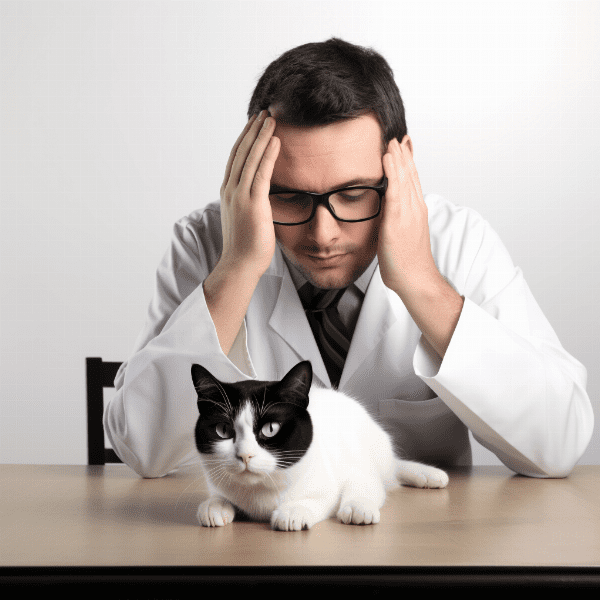
Common Causes of Corneal Ulcers in Cats
Corneal ulcers in cats can occur due to several causes. Understanding these causes is essential for cat owners to take preventative measures to protect their cat’s eye health.
Trauma
Trauma is one of the most common causes of corneal ulcers in cats. This can occur from scratches, bites, or foreign objects that come into contact with the eye. Outdoor cats are at a higher risk of experiencing eye trauma, as they are exposed to potential hazards such as fights with other animals or accidents with cars.
Infections
Bacterial, viral, or fungal infections can also lead to corneal ulcers in cats. These infections can arise from a variety of sources, including the environment, other animals, or existing health conditions. Cats with underlying health conditions such as feline immunodeficiency virus (FIV) or feline leukemia virus (FeLV) may be more susceptible to infections.
Eye Abnormalities
Certain eye abnormalities such as dry eye syndrome or entropion, a condition where the eyelids turn inward, can increase a cat’s risk of developing corneal ulcers. These conditions can cause the cornea to dry out or become irritated, leading to the development of ulcers.
Chemical Irritation
Exposure to chemicals or irritants such as cleaning products or shampoo can also cause corneal ulcers in cats. It is important to keep potentially harmful substances out of reach of cats and to rinse their eyes thoroughly if they come into contact with any irritants.
Foreign Bodies
Foreign bodies such as dirt, grass, or hair can also lead to corneal ulcers in cats. It is important to regularly groom cats to remove excess hair and debris and to keep their environment free of potential hazards.
Understanding the common causes of corneal ulcers in cats is essential for pet owners to take preventative measures and seek prompt veterinary attention if their cat displays any symptoms. In the next section, we will discuss the diagnosis and treatment of corneal ulcers in cats.
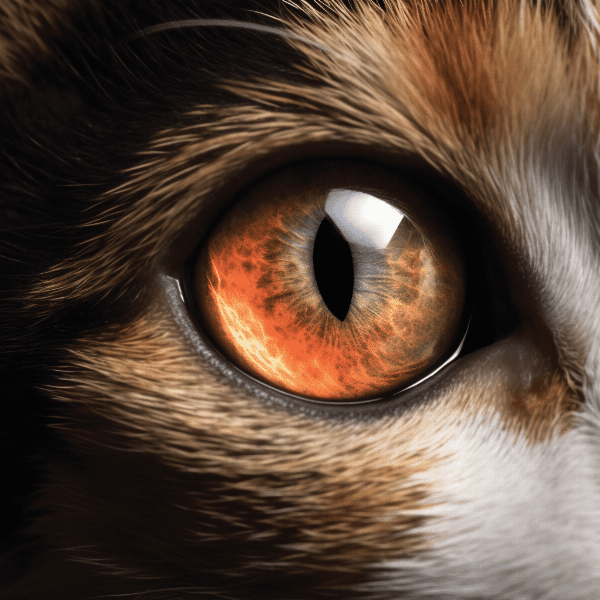
Diagnosis of Corneal Ulcers in Cats
To diagnose a corneal ulcer in a cat, a veterinarian will perform a thorough eye examination. The examination may involve various tests and procedures to determine the extent and cause of the ulcer.
Visual Examination
The veterinarian will begin by visually examining the cat’s eye. They will look for signs of redness, cloudiness, tearing, and other symptoms of a corneal ulcer. They may also use specialized equipment such as an ophthalmoscope to get a closer look at the cornea.
Fluorescein Stain Test
The veterinarian may perform a fluorescein stain test to detect any ulcers on the cornea. This test involves placing a small amount of fluorescent dye into the cat’s eye and then examining it with a blue light. The dye will stick to any damaged areas on the cornea, making them visible under the blue light.
Measurement of Tear Production
Tear production may also be measured to determine if the cat has dry eye syndrome, which can increase the risk of developing corneal ulcers. The veterinarian may use a special strip of paper placed in the eye to measure the amount of tear production.
Microbial Testing
In some cases, the veterinarian may take a sample of the eye discharge to determine the underlying cause of the ulcer. This can involve microbial testing to detect the presence of bacteria, viruses, or fungi.
Accurate diagnosis is essential for determining the appropriate treatment plan for a cat with a corneal ulcer. If left untreated, corneal ulcers can lead to permanent vision loss or even eye removal. In the next section, we will discuss the various treatment options available for cats with corneal ulcers.

Treatment Options for Corneal Ulcers in Cats
The treatment options for corneal ulcers in cats will depend on the severity and underlying cause of the ulcer. Prompt treatment is essential to prevent the ulcer from worsening and causing permanent damage.
Medications
Topical medications such as antibiotic or antifungal drops or ointments are often prescribed to treat corneal ulcers in cats. These medications can help to clear any infection and promote healing of the ulcer. In some cases, pain medication may also be prescribed to alleviate discomfort.
Surgery
In severe cases, surgery may be necessary to treat a corneal ulcer. This can involve removing any damaged tissue from the cornea or performing a corneal graft to replace the damaged tissue with healthy tissue.
Home Care
In addition to veterinary care, home care is also essential for cats with corneal ulcers. This may involve administering medication as directed, keeping the affected eye clean and dry, and preventing the cat from engaging in any activities that may aggravate the ulcer.
Understanding the various treatment options for corneal ulcers in cats is essential for pet owners to provide the best care possible for their furry friend. In the next section, we will discuss the medications commonly used to treat corneal ulcers in cats.

Medications for Corneal Ulcers in Cats
Medications are commonly used to treat corneal ulcers in cats. These medications can help to clear any underlying infection and promote healing of the ulcer.
Antibiotics
Antibiotics are often prescribed to treat bacterial infections that may be present in a corneal ulcer. Topical antibiotics such as chloramphenicol or gentamicin may be used, depending on the severity of the infection.
Antifungals
If a fungal infection is present, antifungal medications such as miconazole or clotrimazole may be prescribed. These medications can help to clear the infection and promote healing of the ulcer.
Anti-inflammatory Drugs
Anti-inflammatory drugs such as corticosteroids may be prescribed to reduce inflammation and promote healing of the corneal ulcer. However, these medications should only be used under the guidance of a veterinarian, as they can have side effects and may worsen certain types of infections.
Pain Medication
Pain medication may also be prescribed to alleviate discomfort associated with a corneal ulcer. This can include topical ointments or oral medications such as buprenorphine or tramadol.
It is crucial to administer any medications as directed by the veterinarian and to attend all follow-up appointments to ensure that the medication is working effectively. In the next section, we will discuss the home care and follow-up required for cats with corneal ulcers.

Home Care and Follow-up for Cats with Corneal Ulcers
Proper home care and follow-up are crucial for cats with corneal ulcers to ensure a full recovery and prevent the ulcer from worsening.
Medication Administration
Administering medication as directed by the veterinarian is essential for promoting healing of the corneal ulcer. This may involve using topical medications such as antibiotic or antifungal drops or ointments or administering oral medications as directed.
Eye Cleaning
Keeping the affected eye clean and dry is also essential for cats with corneal ulcers. This may involve using a damp cloth to gently clean the area around the eye and preventing the cat from rubbing or pawing at the eye.
Elizabethan Collar
An Elizabethan collar may be recommended to prevent the cat from pawing or scratching at the affected eye. This can help to prevent further damage and promote healing.
Follow-up Appointments
Regular follow-up appointments with the veterinarian are essential for monitoring the healing progress of the corneal ulcer. The veterinarian may perform additional tests or procedures to ensure that the ulcer is healing correctly and to make any necessary adjustments to the treatment plan.
Preventative Measures
Taking preventative measures to protect a cat’s eye health can also help to prevent the development of corneal ulcers. This may involve keeping the cat’s environment free of potential hazards, such as cleaning products or sharp objects, and regularly grooming the cat to remove excess hair and debris.
In conclusion, understanding the causes, symptoms, and treatment options for corneal ulcers in cats is essential for pet owners to provide the best care possible for their furry friend. By taking preventative measures and seeking prompt veterinary attention when necessary, cat owners can help to protect their cat’s eye health and prevent vision loss.
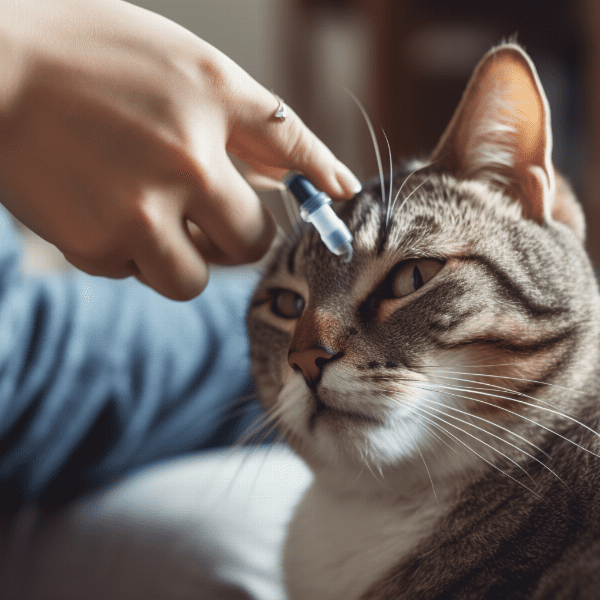
Complications and Prognosis for Cats with Corneal Ulcers
While most corneal ulcers in cats can be successfully treated with proper veterinary care and home care, there are potential complications and long-term effects to be aware of.
Complications
If a corneal ulcer is left untreated or does not respond to treatment, it can lead to complications such as permanent vision loss, scarring of the cornea, or even eye removal in severe cases. Additionally, underlying health conditions such as FIV or FeLV can increase the risk of complications.
Prognosis
The prognosis for cats with corneal ulcers is generally good with prompt veterinary care and proper home care. Most cats will experience a full recovery with no long-term effects. However, the prognosis can be less positive if there are underlying health conditions or if the ulcer is severe and has caused significant damage to the cornea.
Prevention
Preventing corneal ulcers in cats is essential for protecting their eye health and preventing potential complications. This may involve taking preventative measures such as keeping the cat’s environment free of potential hazards, regularly grooming the cat to remove excess hair and debris, and seeking prompt veterinary attention if any signs of a corneal ulcer are present.
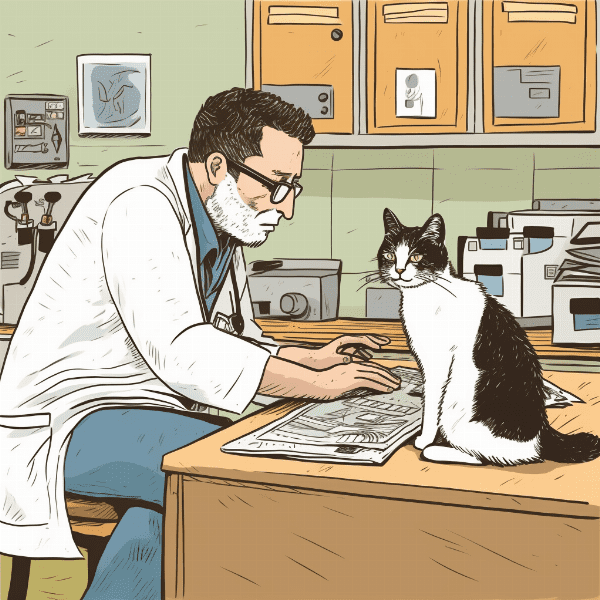
Preventing Corneal Ulcers in Cats
Preventing corneal ulcers in cats is essential for protecting their eye health and overall well-being. Here are some tips for preventing corneal ulcers in cats:
Regular Eye Exams
Regular eye exams with a veterinarian can help to detect any potential issues before they develop into more serious problems such as corneal ulcers. This can help to prevent the development of ulcers and ensure early detection and treatment if they do occur.
Environmental Safety
Keeping a cat’s environment free of potential hazards is crucial for preventing corneal ulcers. This may involve keeping cleaning products, sharp objects, and other potential hazards out of reach of cats.
Grooming
Regular grooming can help to prevent the development of corneal ulcers by removing excess hair and debris that can irritate the eyes. This can involve brushing the cat’s fur regularly and keeping the eye area clean and dry.
Proper Nutrition
A healthy diet can also help to prevent corneal ulcers in cats by promoting overall health and immunity. Providing a balanced diet with essential nutrients can help to strengthen a cat’s immune system and prevent infections.
Veterinary Care
Regular veterinary care is essential for maintaining a cat’s overall health and detecting any potential issues before they become more serious. It is important to seek veterinary attention promptly if any signs of a corneal ulcer are present.
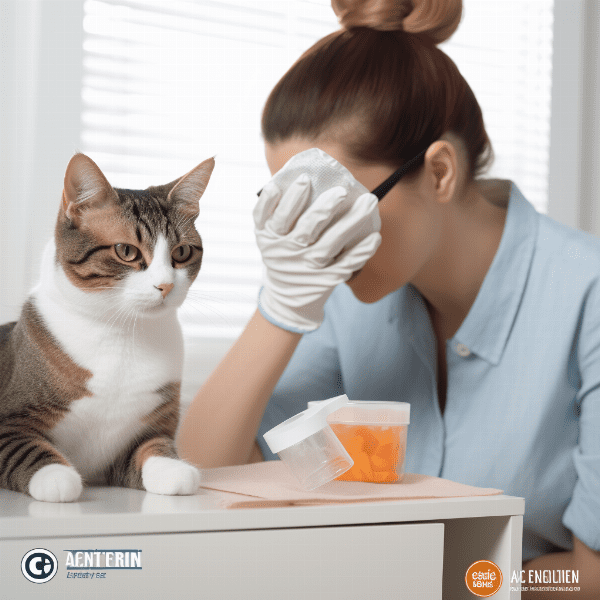
Conclusion: Caring for a Cat with a Corneal Ulcer
Caring for a cat with a corneal ulcer requires prompt veterinary attention, proper home care, and preventative measures to protect their eye health and overall well-being.
By understanding the causes, symptoms, and treatment options for corneal ulcers in cats, pet owners can take the necessary steps to ensure their furry friend receives the best care possible. This includes administering medications as directed by the veterinarian, keeping the affected eye clean and dry, and preventing the cat from engaging in any activities that may aggravate the ulcer.
Regular veterinary care and follow-up appointments are also essential for monitoring the healing progress of the corneal ulcer and making any necessary adjustments to the treatment plan.
Preventing corneal ulcers in cats requires a combination of regular veterinary care, environmental safety, grooming, proper nutrition, and attentive care from pet owners. By taking these preventative measures, cat owners can help to protect their furry friend’s eye health and overall well-being.
In conclusion, while corneal ulcers in cats can be a serious issue, with proper care and treatment, most cats will experience a full recovery. By taking preventative measures and seeking veterinary attention when necessary, cat owners can help to ensure their furry friend lives a happy and healthy life.
